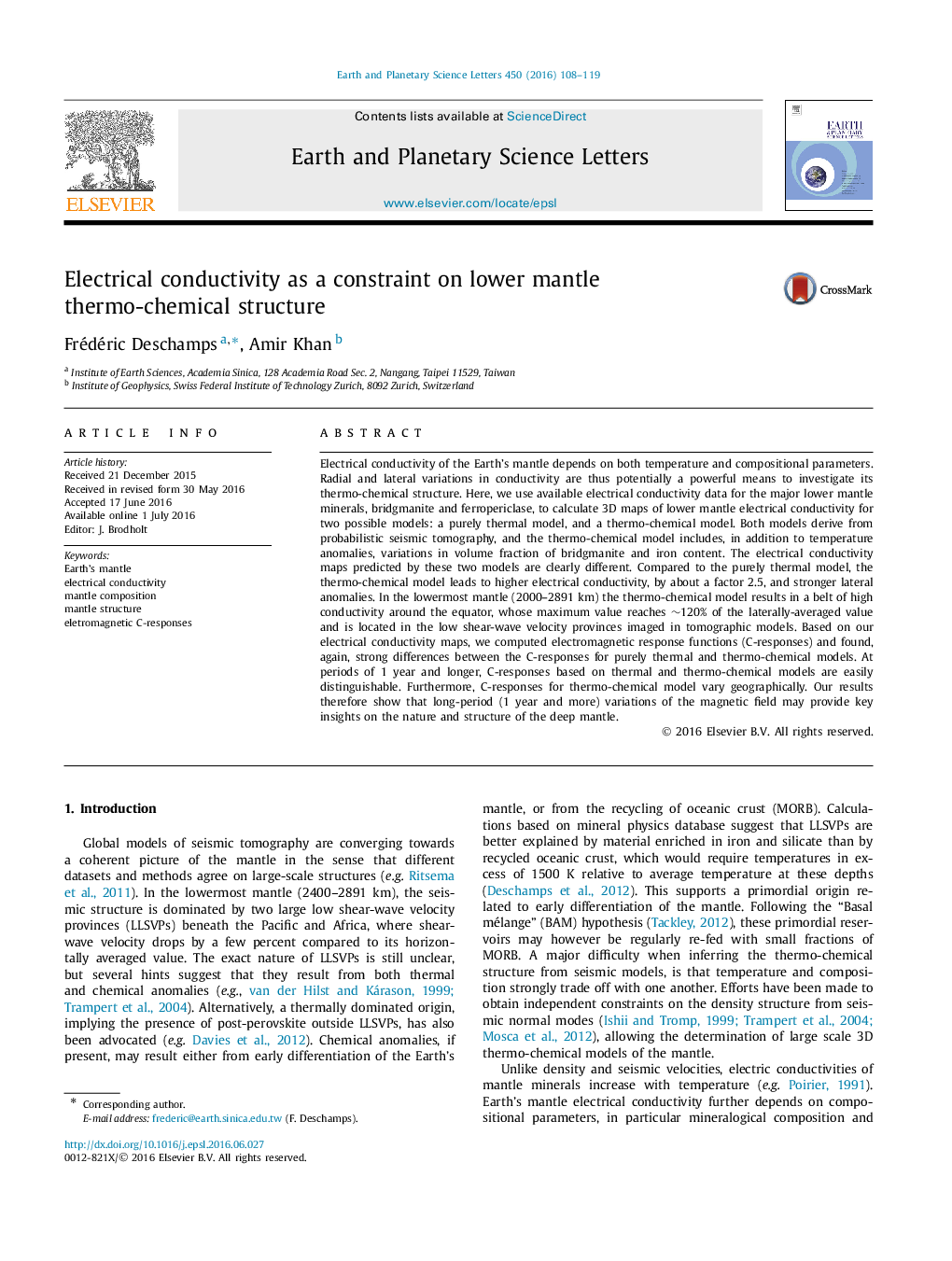| Article ID | Journal | Published Year | Pages | File Type |
|---|---|---|---|---|
| 6427292 | Earth and Planetary Science Letters | 2016 | 12 Pages |
Abstract
Electrical conductivity of the Earth's mantle depends on both temperature and compositional parameters. Radial and lateral variations in conductivity are thus potentially a powerful means to investigate its thermo-chemical structure. Here, we use available electrical conductivity data for the major lower mantle minerals, bridgmanite and ferropericlase, to calculate 3D maps of lower mantle electrical conductivity for two possible models: a purely thermal model, and a thermo-chemical model. Both models derive from probabilistic seismic tomography, and the thermo-chemical model includes, in addition to temperature anomalies, variations in volume fraction of bridgmanite and iron content. The electrical conductivity maps predicted by these two models are clearly different. Compared to the purely thermal model, the thermo-chemical model leads to higher electrical conductivity, by about a factor 2.5, and stronger lateral anomalies. In the lowermost mantle (2000-2891 km) the thermo-chemical model results in a belt of high conductivity around the equator, whose maximum value reaches â¼120% of the laterally-averaged value and is located in the low shear-wave velocity provinces imaged in tomographic models. Based on our electrical conductivity maps, we computed electromagnetic response functions (C-responses) and found, again, strong differences between the C-responses for purely thermal and thermo-chemical models. At periods of 1 year and longer, C-responses based on thermal and thermo-chemical models are easily distinguishable. Furthermore, C-responses for thermo-chemical model vary geographically. Our results therefore show that long-period (1 year and more) variations of the magnetic field may provide key insights on the nature and structure of the deep mantle.
Related Topics
Physical Sciences and Engineering
Earth and Planetary Sciences
Earth and Planetary Sciences (General)
Authors
Frédéric Deschamps, Amir Khan,
